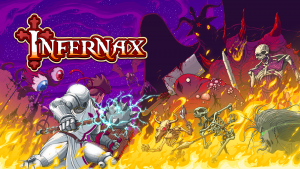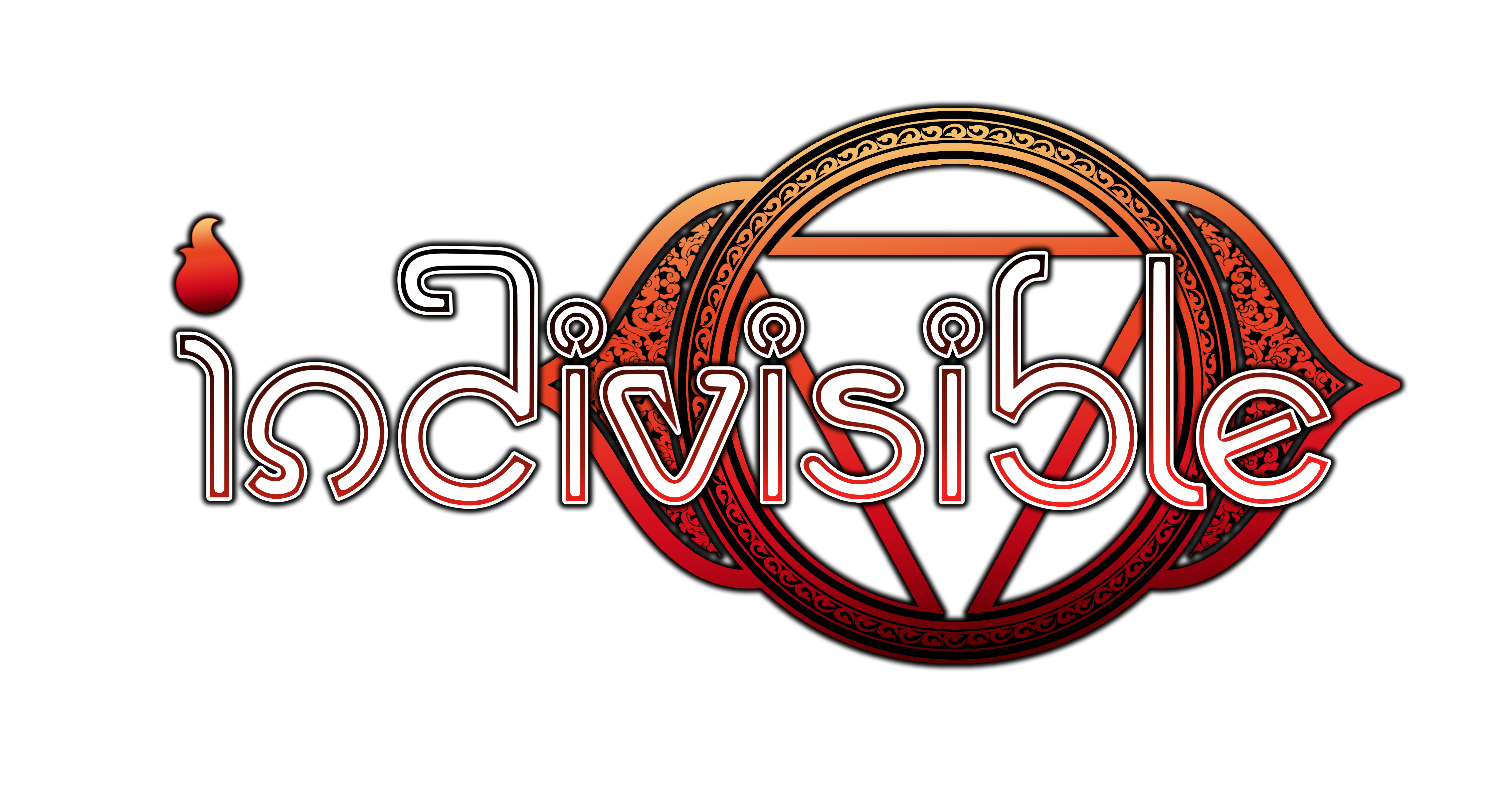
Indivisible is a charming patchwork of different genres, a game that’s disparate styles of play are woven together to create a varied and satisfying experience. Its combat systems are deeply indebted to timing-based JRPGs like Valkyrie Profile, presenting pseudo-turn-based combat that heavily favors skill. In between battles, its a 2D platformer that arms the player with an increasingly impressive arsenal of movement tools. While the first few hours are linear, it eventually opens up into a much larger world that must be explored and backtracked through in the style of a Metroid game. Even though some of these elements have their fair share of flaws, the differing styles of play help mask the other element’s weaknesses. And beyond gameplay, Ajna’s journey is one that is told with care, a story of change on a personal and cosmic scale that is bolstered by an excellent cast of likable characters.
This tale begins when Ajna, the daughter of a warrior named Indr, watches as her village is burned to the ground and her father is murdered. The murderer, Dhar, is a soldier of the warlord Ravannavar. But as Ajna prepares to fight Dhar, he is suddenly sucked into Ajna’s mind. Initially stunned, she finds that she has gained the ability to absorb others into her brain, augmenting her own powers. From there she sets out on a journey to claim revenge against Ravannavar and discover the nature of her abilities.
The many travelers Ajna meets over her adventure are a delightful bunch, their varying personalities, motivations, and demeanors making for some hilarious and emotionally convincing conversations. The character designs also help sell the diversity and uniqueness of their dispositions, their distinctive looks toeing the line between anime and old Disney cartoons. Their banter is such a pleasure to listen to that I often pushed forward to the next story point just to hear what they had to say.
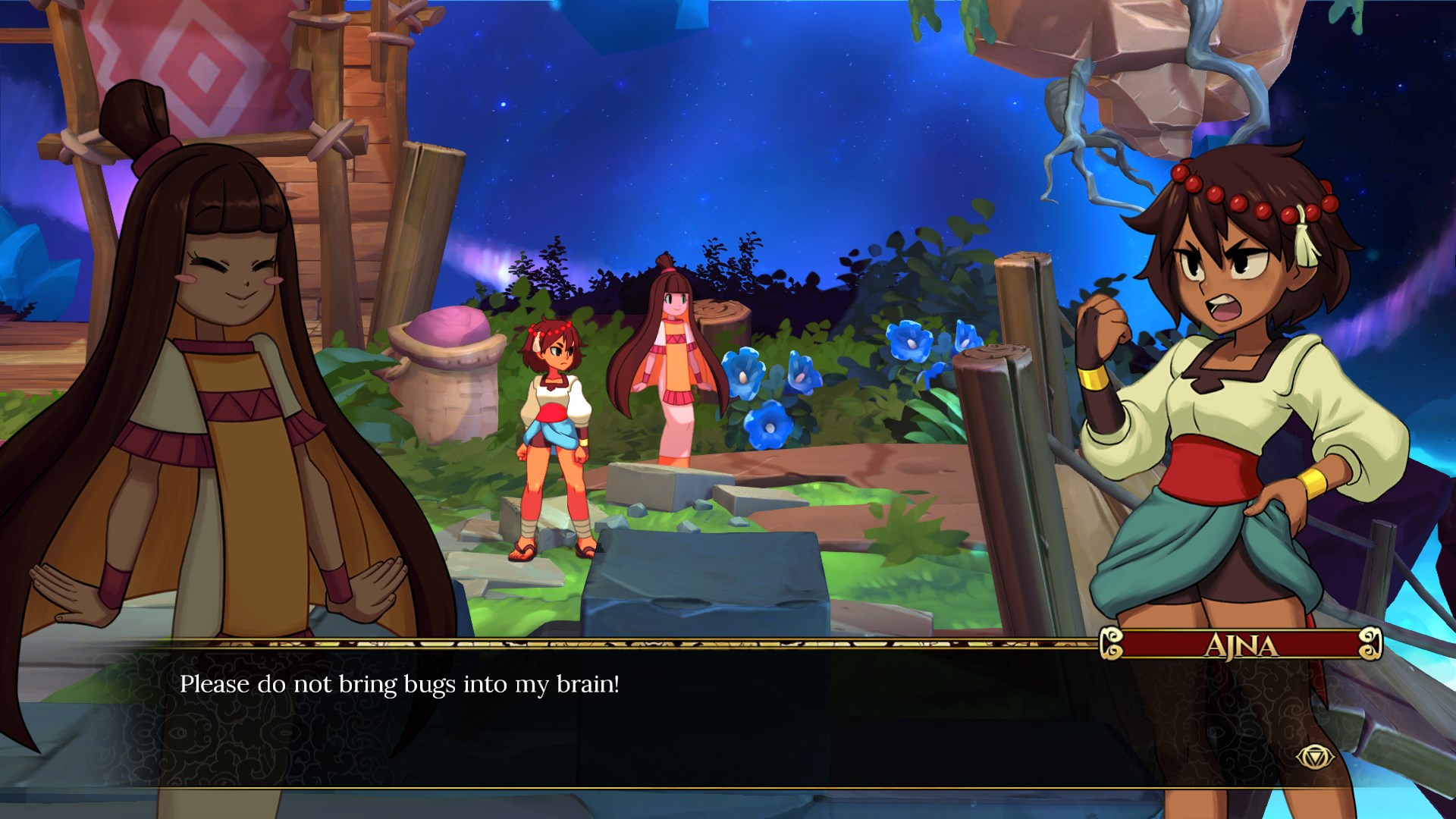
There’s your first friend Razmi, a witchy fire sorceress who keeps the soul of her dead pet tiger in her lantern. There’s the motherly goddess Thoranni, whose loving relationship with Ajna is delightfully genuine. There’s the pirate queen Baozhai, whose major weakness is her intense shyness around cute girls (such as Thoranni). While Dhar begins as a cruel warrior, he slowly comes to realize the gravity of his previous wrongs as he reconciles his upbringing as a child soldier.
This is fitting, as this is a story about change. Aesthetically and thematically inspired by Hinduism and a medley of other cultures, the narrative follows as Ajna comes face to face with divine beings on her quest to address her impulsiveness and desire for revenge. The crew comes into conflict with many authority figures along the way, whether they be imperialistic governments that aim to conquer or heavenly beings that aim to remake. The different branches of this story all tie together in the end, resulting in a great conclusion that neatly ties into the many character’s stories.
Even without the solid storytelling, Indivisible’s distinctive mixture of genres makes it enticing. Considering that developer Lab Zero’s previous expertise lies in fighting games (Skullgirls), it makes sense that the game’s battle system makes use of concepts like combos, supers, and parries. Here these mechanics are streamlined and simplified, a choice that makes sense considering all of the different moves of the large cast. Once in a fight, each of your four character’s “pips” will charge, with each pip allowing you to perform one move. Each character can perform three different moves, which have unique properties such as juggling an enemy, breaking blocks, healing, setting traps, charging up subsequent attacks, and more.
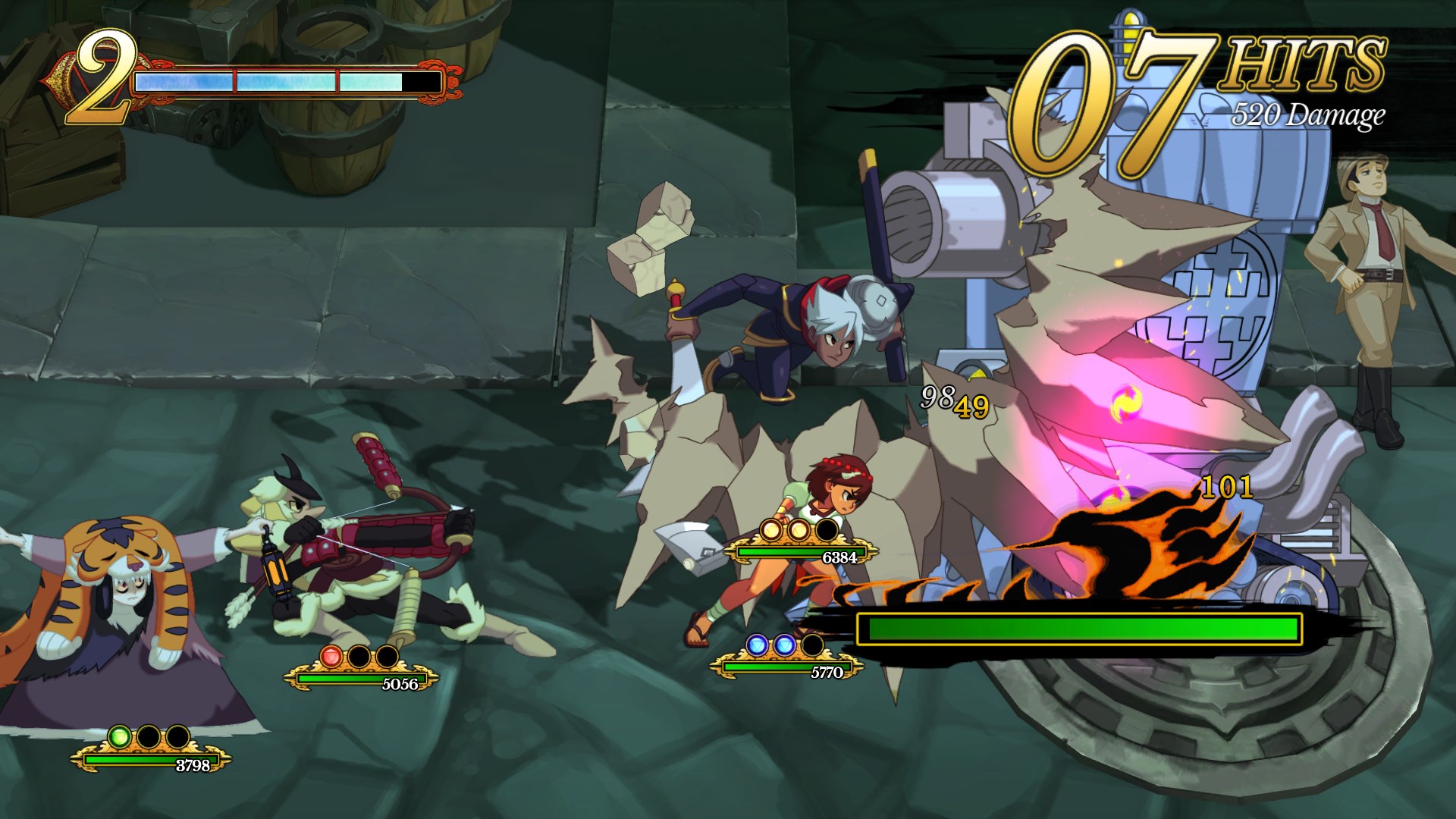
But the trick lies in chaining together these moves to perform combos, as longer combos cause your attacks to do more damage. While it is sometimes possible to mash your way through encounters, the fun comes from finding the perfect chains to maximize your damage, while healing, and debuffing your opponent whenever possible. Since you are often controlling multiple characters at once, with each face button mapped to a different character, there is an art to lining up all of your attacks to retain a combo, ensuring that the startup time of one party member’s blow are offset by another’s strikes. The mix of real-time combat and JRPG mechanics works excellently, and the variety of the large cast of characters means that there are frequent opportunities to come up with new team compositions and unique combo chains.
When your foes attack, you have the opportunity to block their strikes to mitigate some of the damage. If you land a clean block by timing your block perfectly, you will even heal some health. The risk-reward of opting for a normal block or a parry adds an appealing option for players who want to master the game. Learning the clean block timing for the myriad of differing enemy attacks takes time and effort that is rewarded with the immense satisfaction of being untouchable.
But unfortunately, there are times when playing near-perfect becomes less optional. Throughout the world, there are occasional enemies that have the ability to kill you in one shot if you fail to perfect block, creating harsh difficulty spikes. Although the vast majority of enemy encounters are skippable if you manage to dodge enemies before entering a battle, and these one-shot kill fights can be somewhat engaging in their demand for perfection, it is still odd that these foes are somewhat randomly distributed in the middle of levels. On the flip side, the final stretch of the game is far too easy. After a plot event results in Ajna becoming more powerful, almost every enemy dies after a few attacks, completely trivializing combat. While the final boss tips the balance back towards presenting a reasonable challenge, the last couple hours almost entirely gloss over combat due to boosting your stats so dramatically.
The RPG mechanics are generally the weak point of the gameplay, due to their relative simplicity. There is no inventory or skill-trees to speak of, and while leveling boosts health and attack power, improvement is mostly only felt in the massive stat boosts that are tied to story progression. These choices do feel somewhat deliberate, forcing the player to execute in combat rather than allow them to grind out levels until they are overpowered, but it would be nice if there was slightly more room for customization and stat tinkering.
Thankfully there is a way to bolster your team that is in your control. By collecting Ringsels you can improve the maximum number of attacks your characters can perform, and improve your defense. These gems can be found in hidden locations and at the end of platforming gauntlets, tying nicely into the game’s other elements by rewarding exploration and precise platforming.
Traversal outside of combat is surprisingly fully featured, with a huge number of different abilities that add additional layers of nuance as they are unlocked. To name a few, there are high jumps, ceiling climbing, and multiple types of aerial dashes. Even at its base, the platforming feels good, with the unique addition of an ax that can be used to scale up the sides of walls setting things apart. To embed the ax into a surface the stroke must be briefly charged beforehand, creating a challenging and gratifying dynamic where some moves must be buffered. Movement feels responsive because different moves can be canceled into one each other, creating a seamless stream of acrobatics. There are so many different techniques that some areas take on some element of puzzle-solving, requiring the correct combination of moves in sequence to progress.
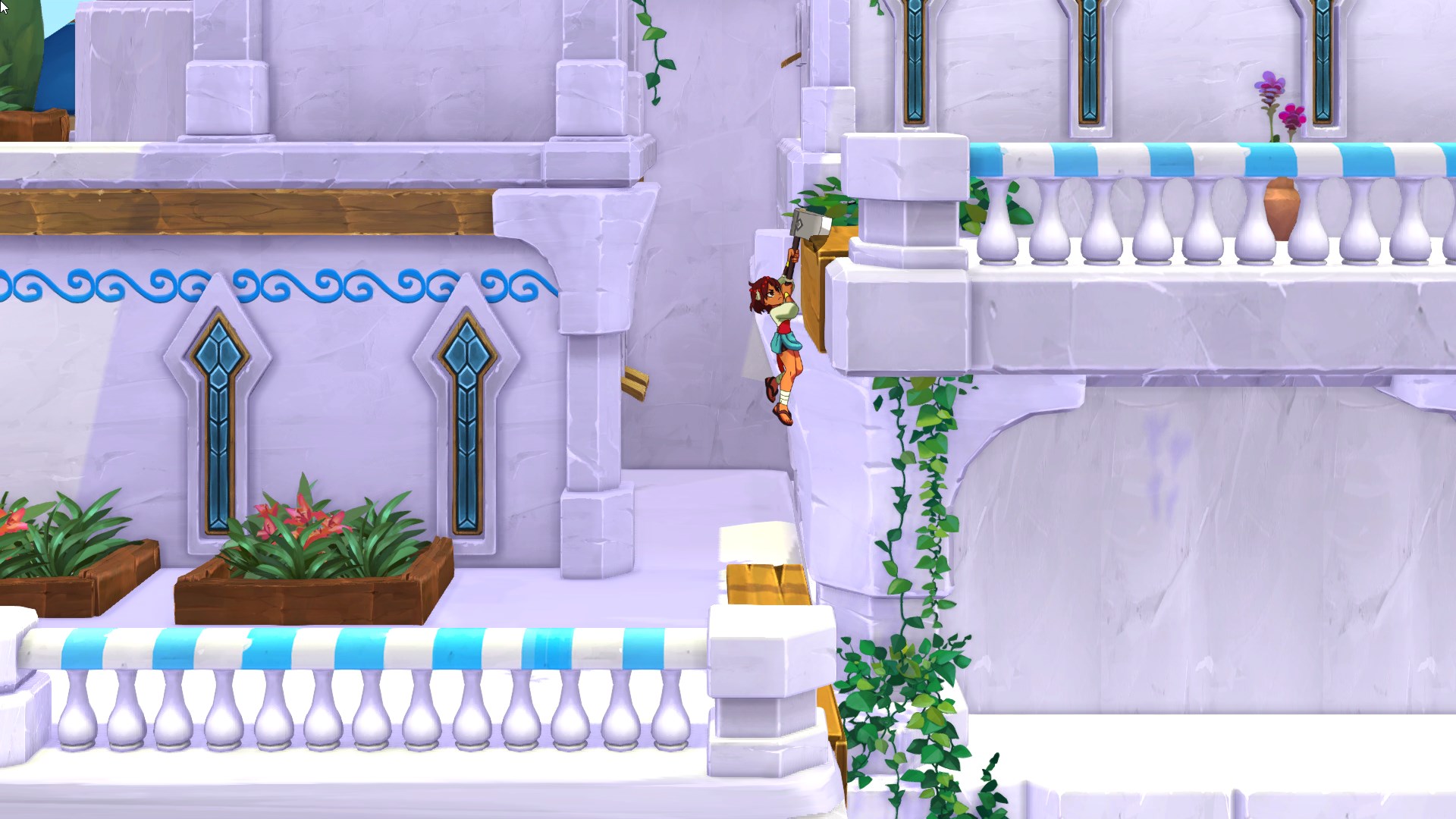
By unlocking new abilities, it becomes possible to explore new areas. While the world is almost entirely interconnected, each of the areas is sectioned off from the others in a way that makes it so that exploration isn’t the emphasis here like it would be in a dedicated Metroidvania game. The middle of the game is the only portion where it feels as though you truly have to poke around at the corners of the world in a deliberate way to proceed, and for the most part the plot fairly explicitly guides you. The unfortunate side effect of this is that it limits the appeal of backtracking through previous areas, as exploring the corners of this world isn’t necessary for progression most of the time.
Additionally, when traversing between areas, there were often issues with background loading that caused frame-rate issues and led me to phase through walls, in some cases becoming trapped in geometry, necessitating a hard reload. Another frequent bug surrounds entering battles where, in some cases, your enemies can get stuck on the platforming obstacles in the background of the map, breaking fights or causing bouts to restart. In one very beguiling case, I encountered a bug where one of the story triggers in an area broke, leaving me aimlessly wandering an area for around half an hour. It eventually was fixed after a reload, but issues like this make the experience a little rough around the edges.
But despite these problems, I very much enjoyed my time with Lab Zero’s latest. It is a unique medley of different gameplay elements, which combines with some great writing to deliver a truly memorable experience. Its battle system succeeds at distilling fighting game concepts into the form of a JRPG, offering enough meat to make combat satisfying. The platforming is consistently fantastic, with tight controls and a great deal of variety through the scores of different abilities. Spending time with these characters is consistently delightful due to all of the great side-conversations, running jokes, and convincing voice acting. The main plot is equally successful, portraying the story of Ajna’s growth convincingly. Indivisible may be made up of familiar parts, but it brings together its disparate elements in a way that makes it feel truly singular.
Rating: 8.5/10
Note: This review is based on a pre-release version of the game on PS4. It is possible that some of the previously mentioned bugs and game balance issues will be fixed at launch.
Photos courtesy of 505 Games and Lab Zero

